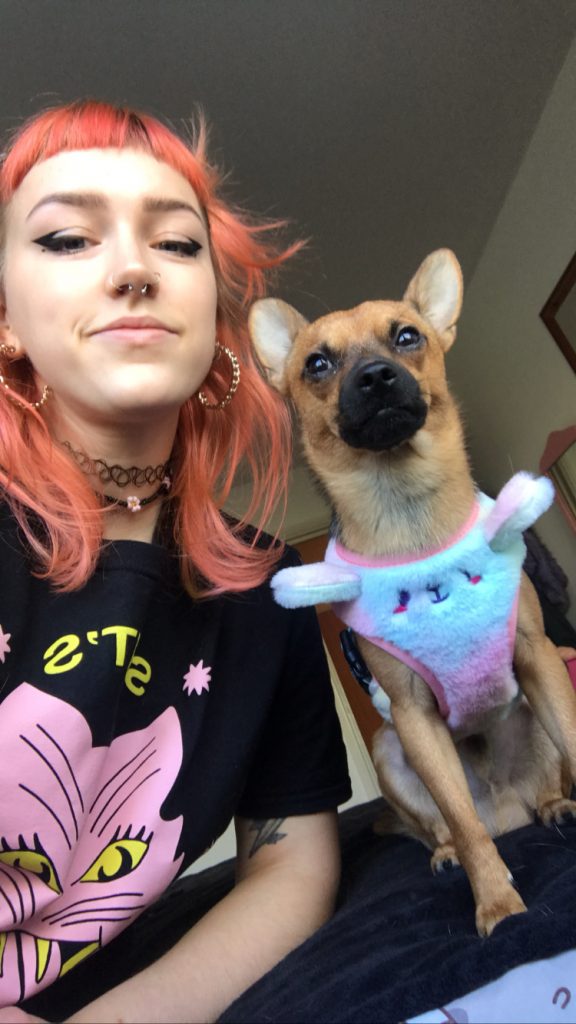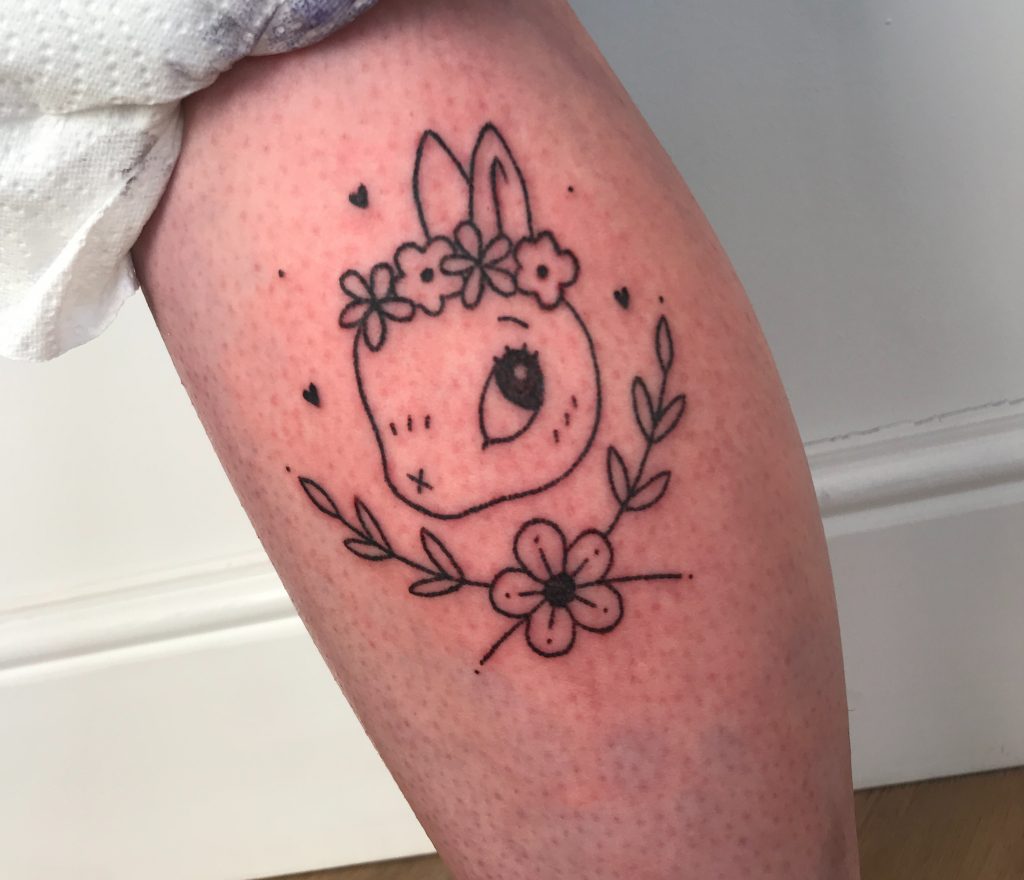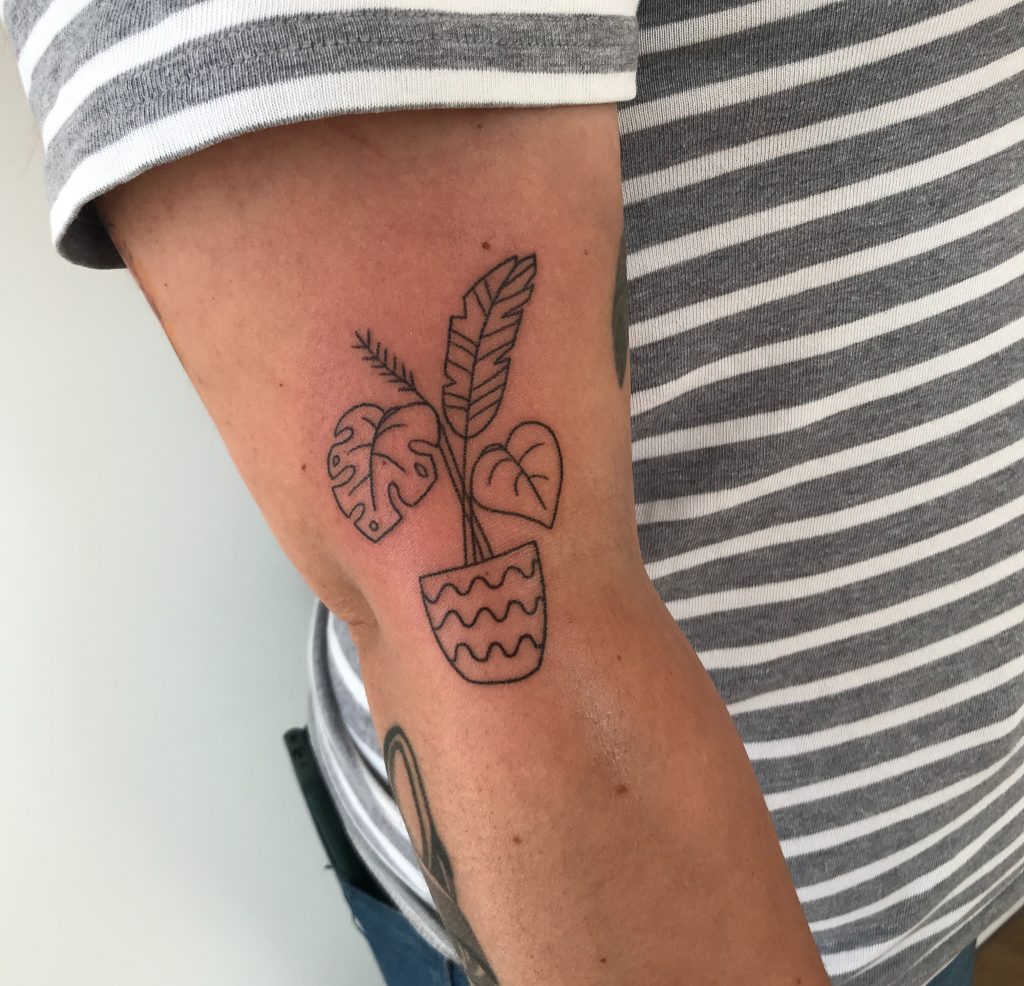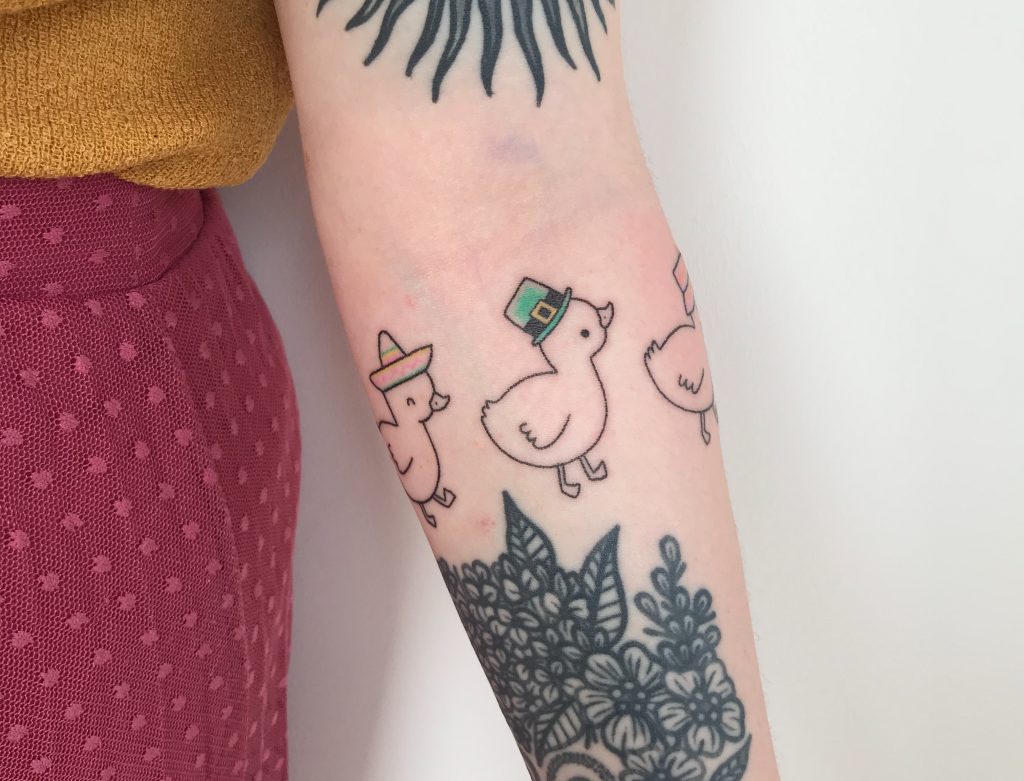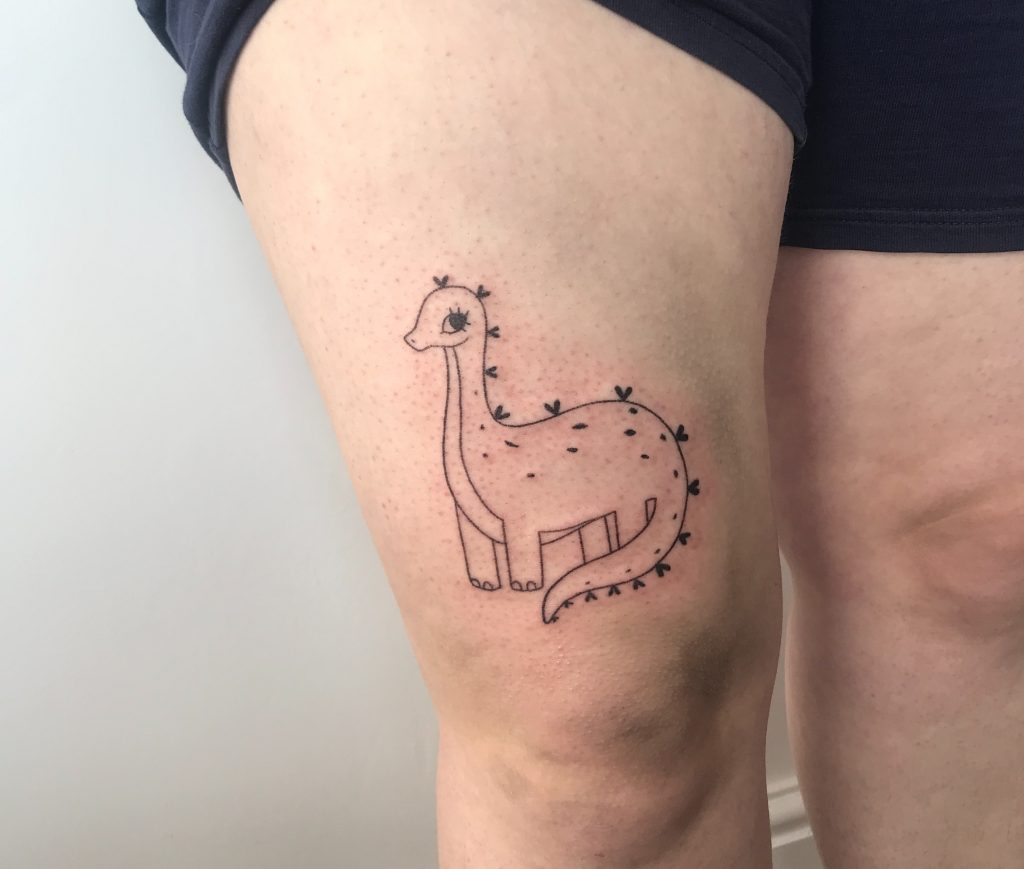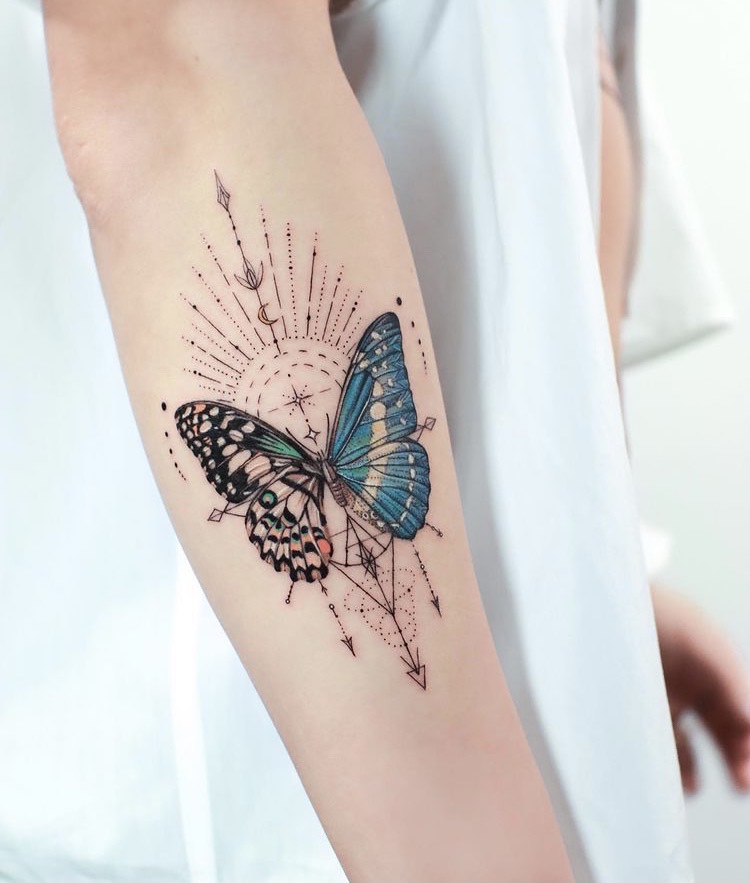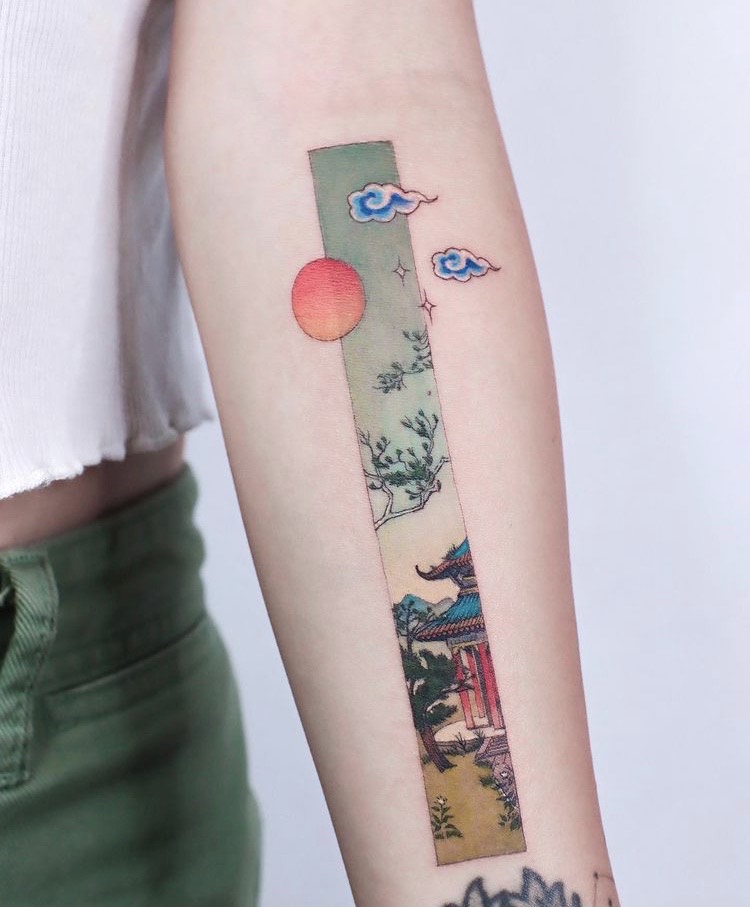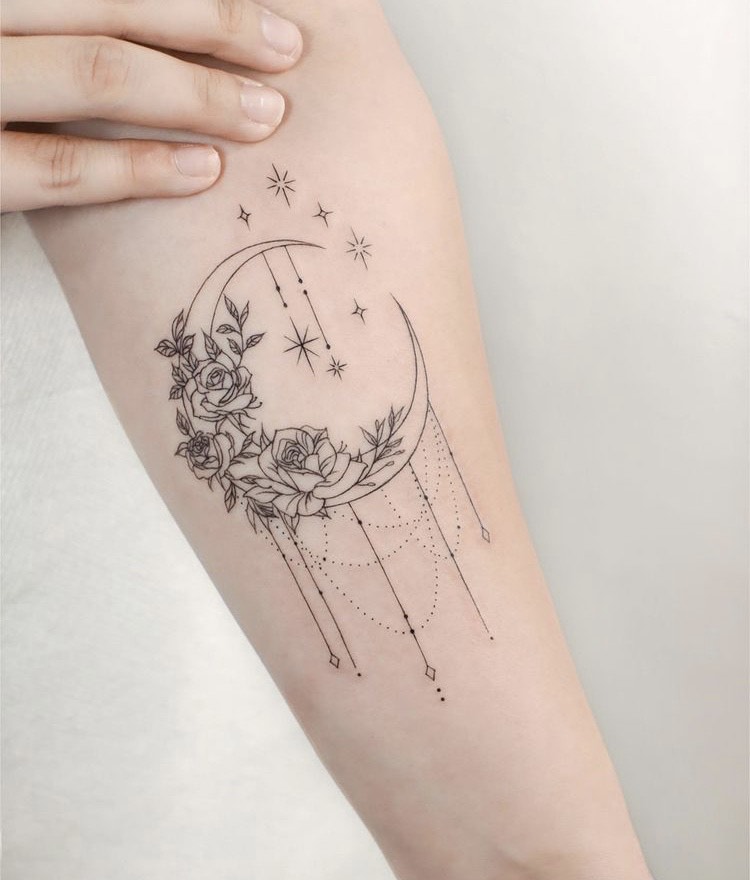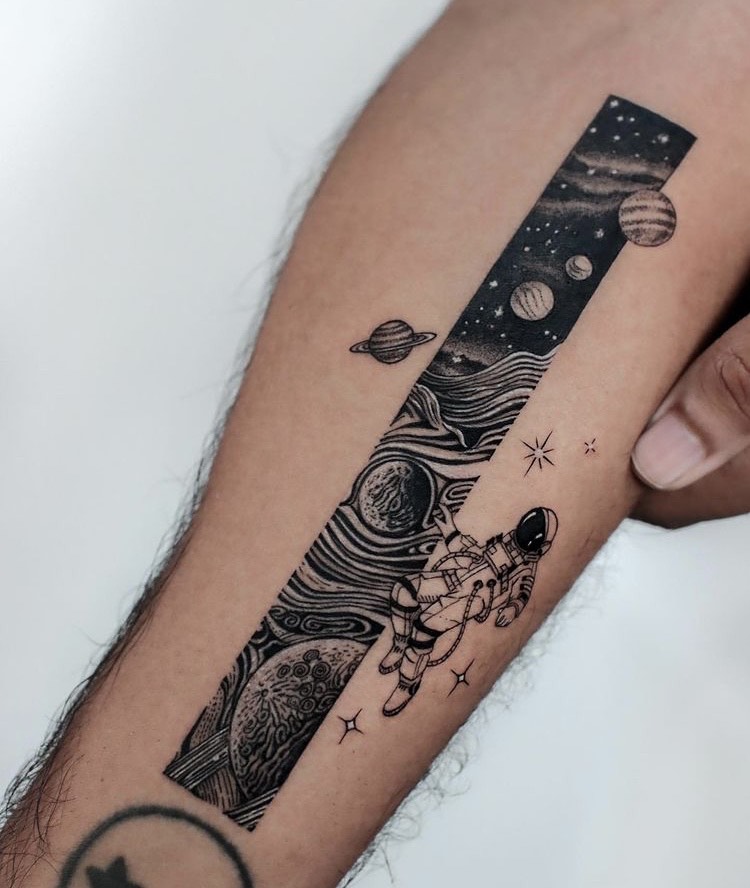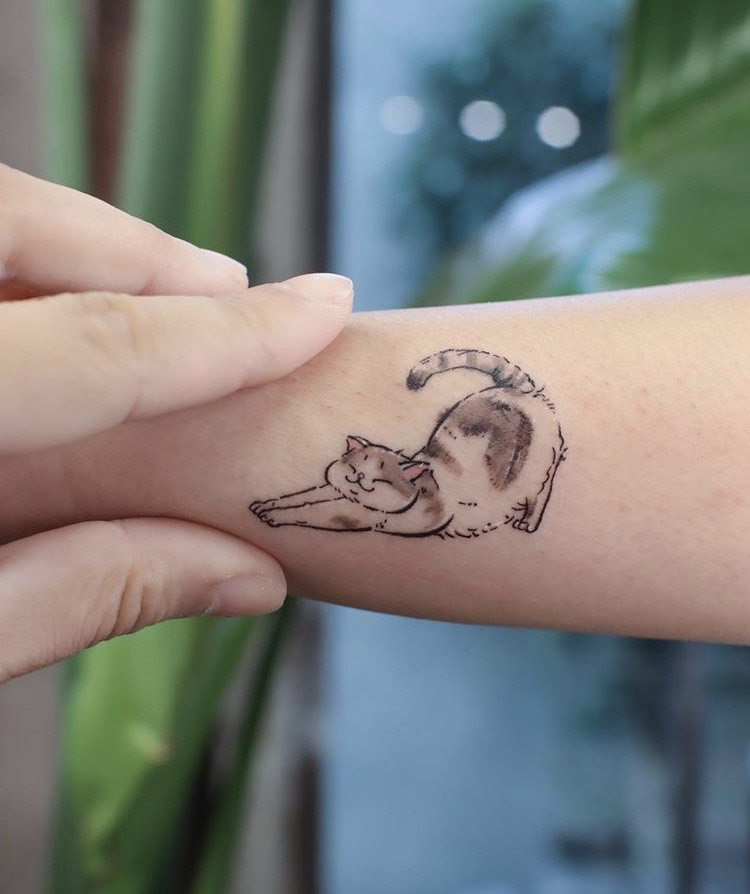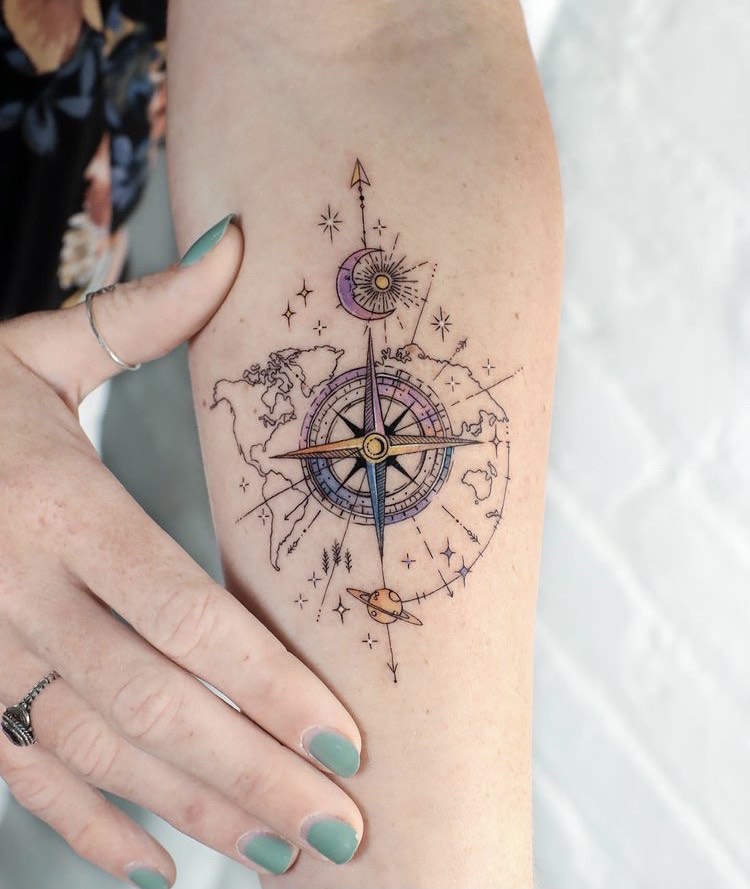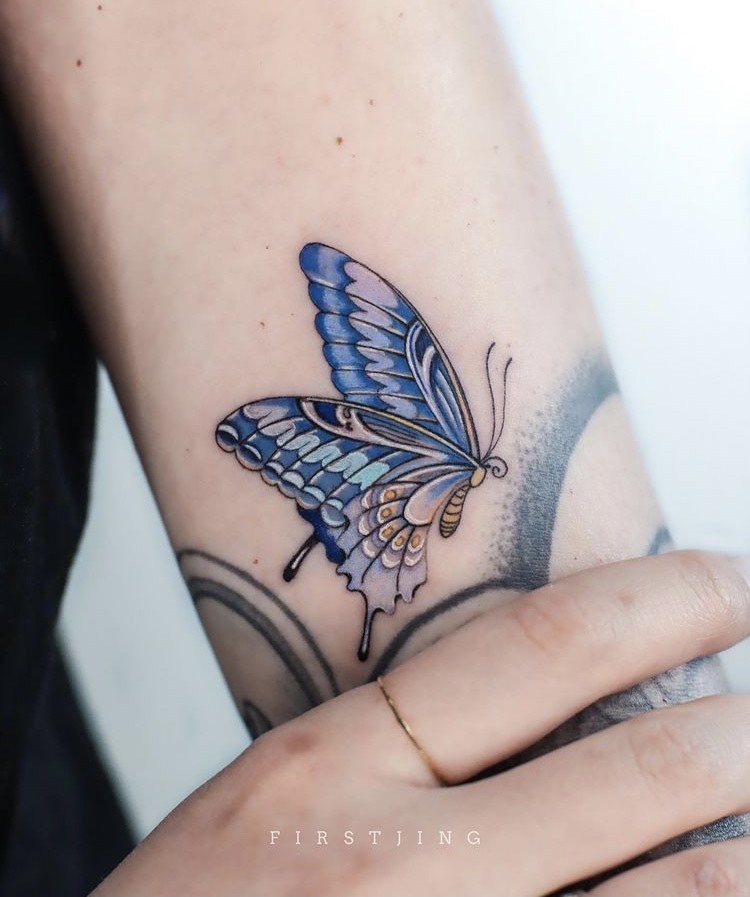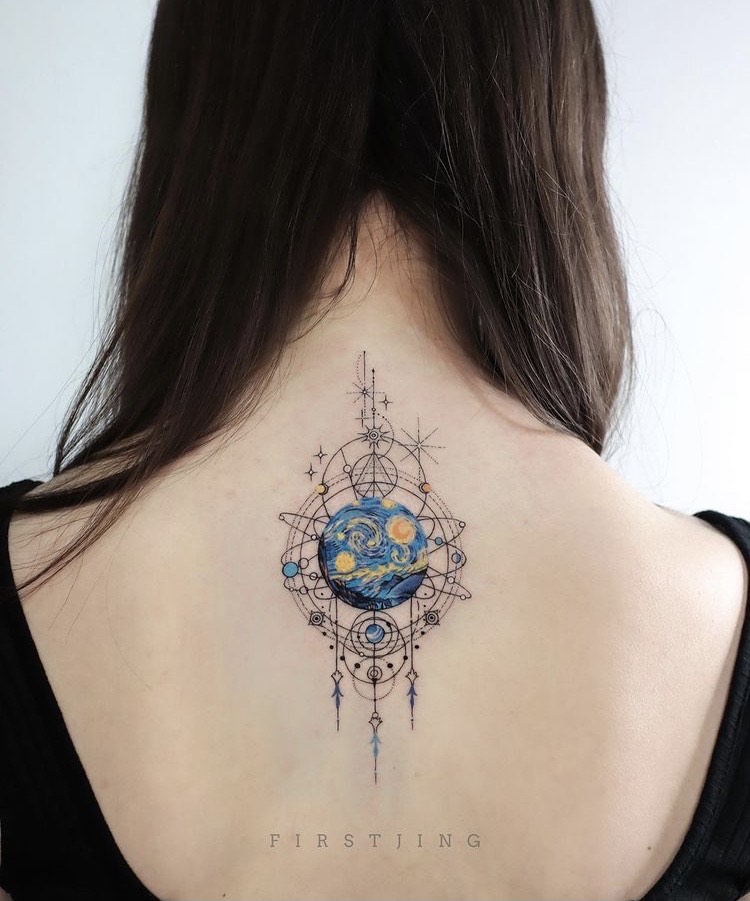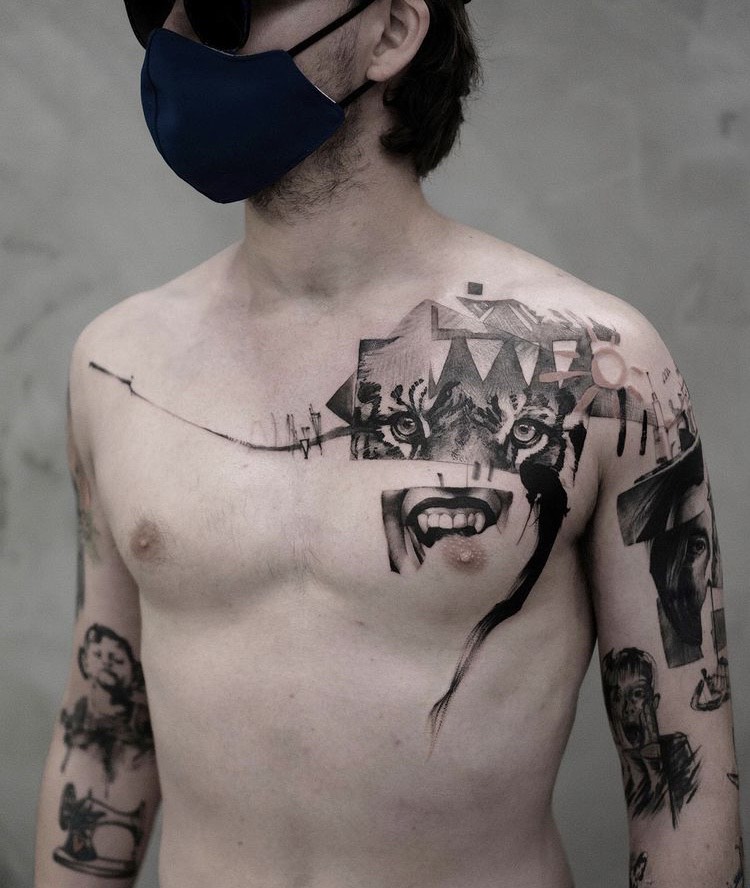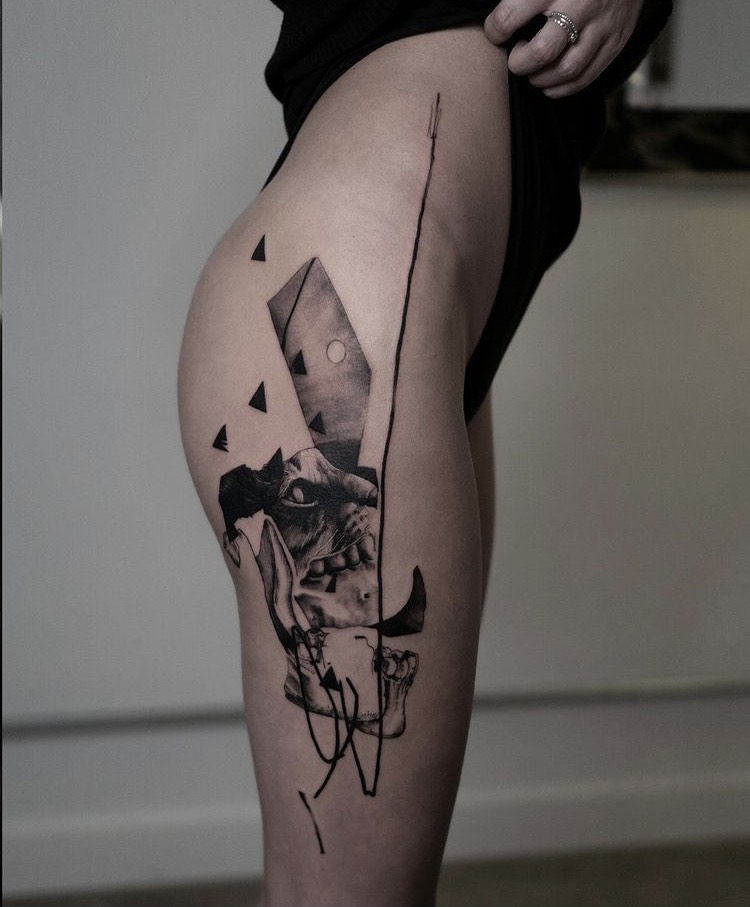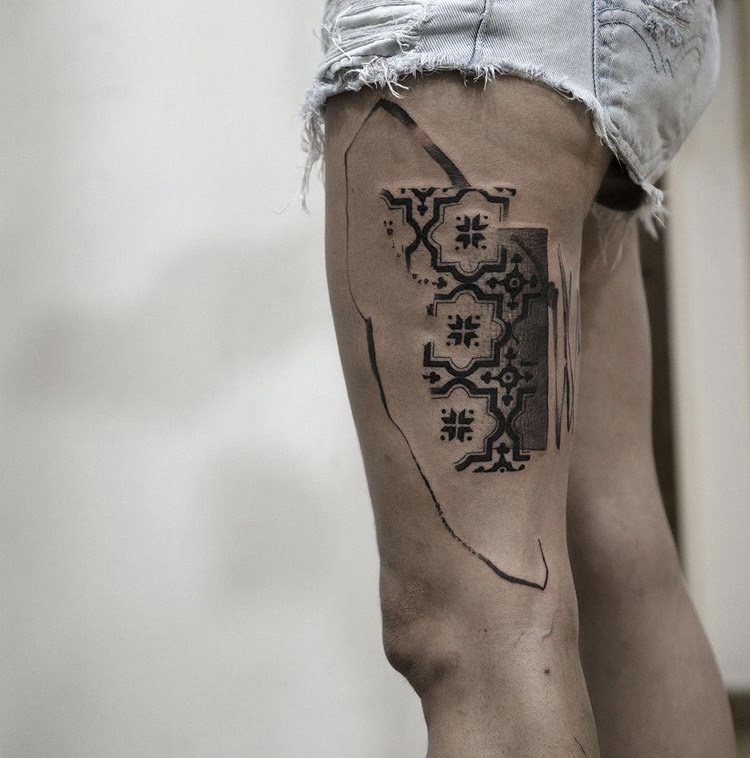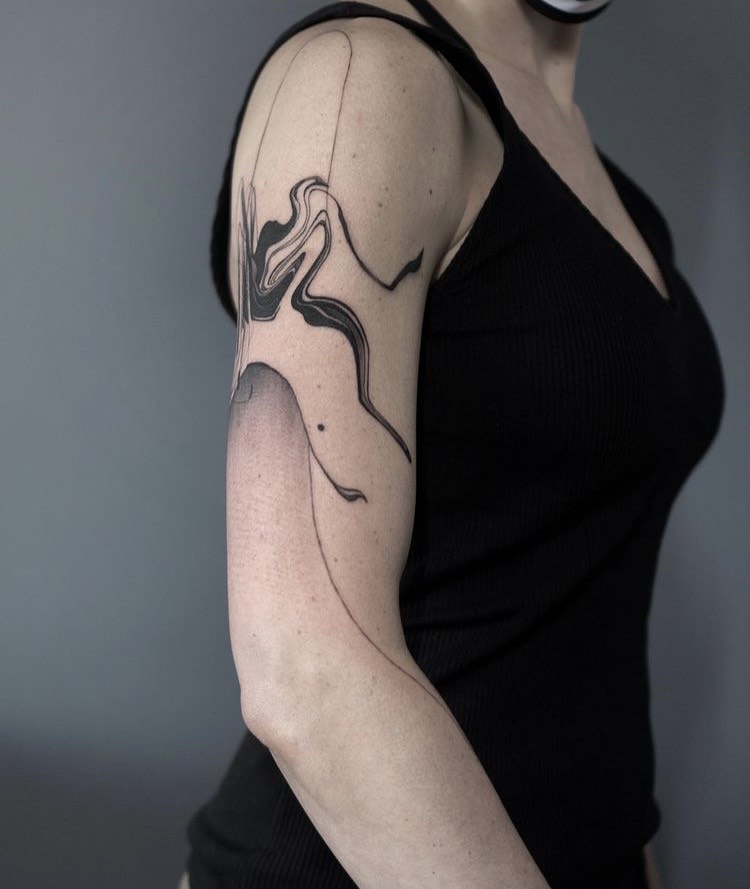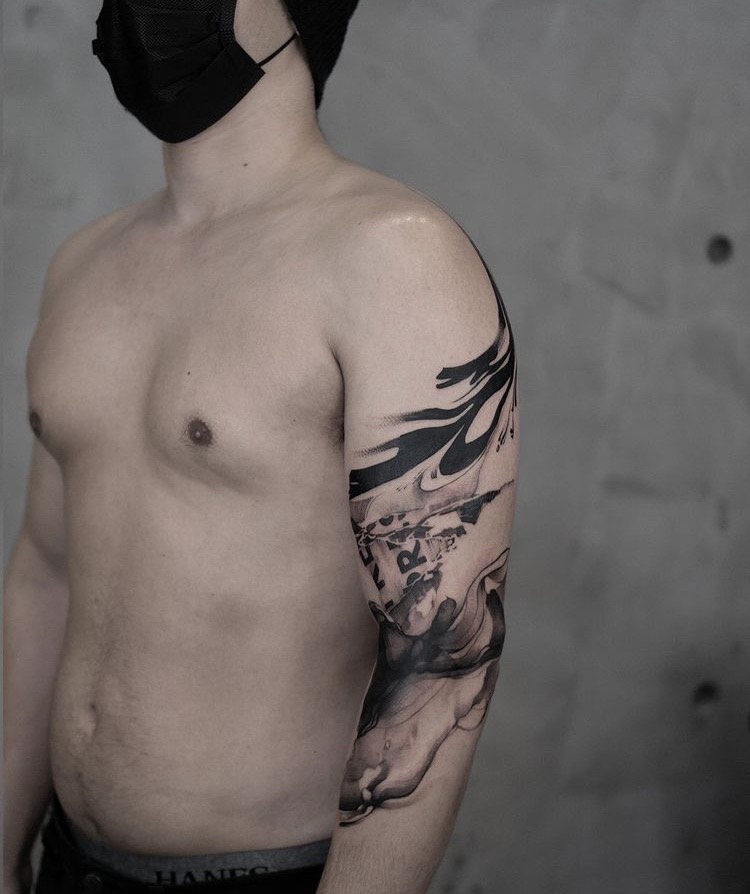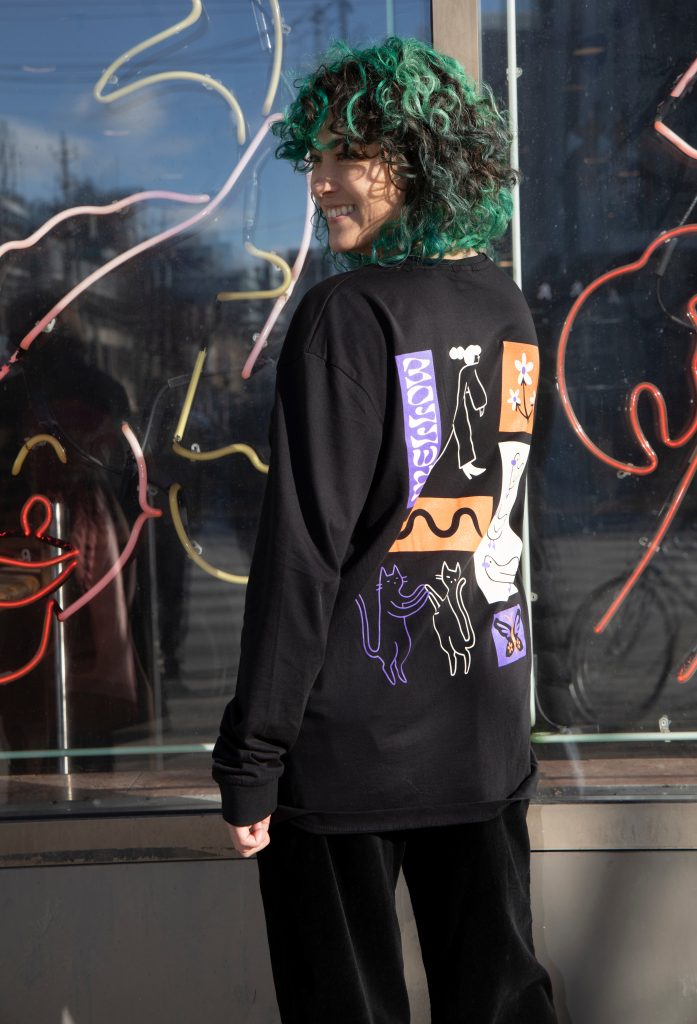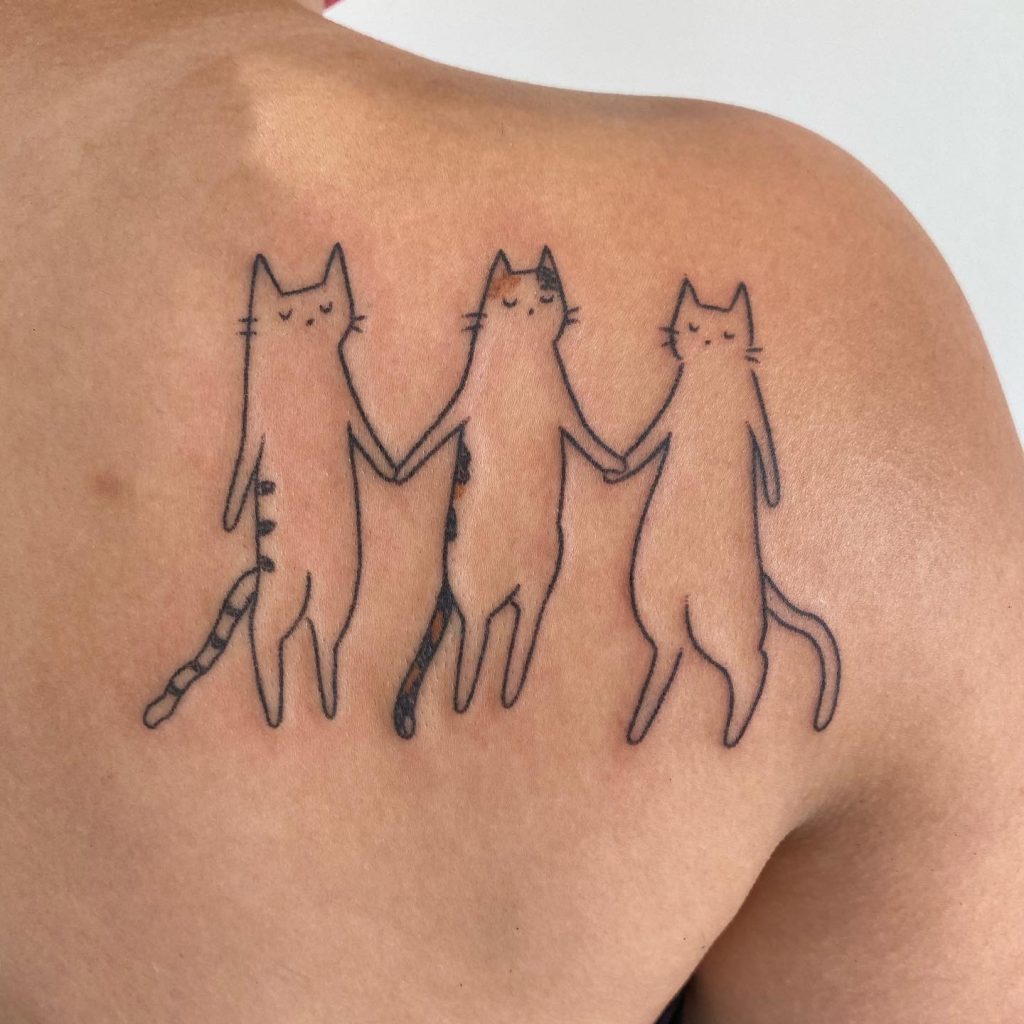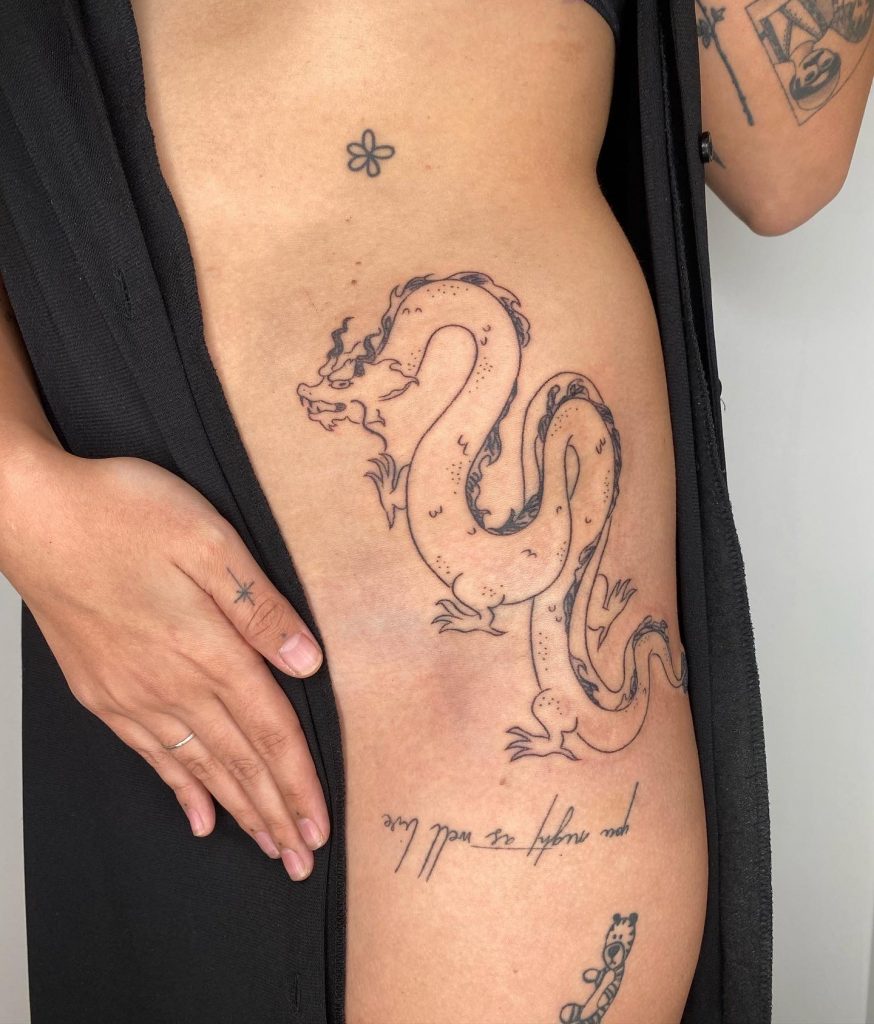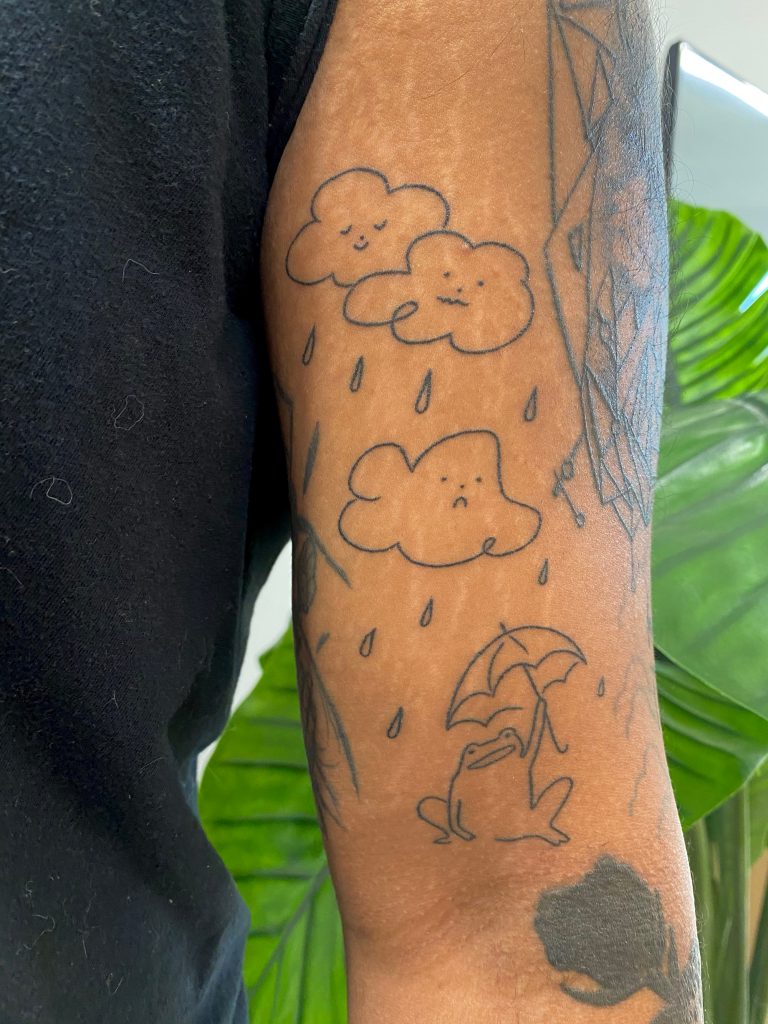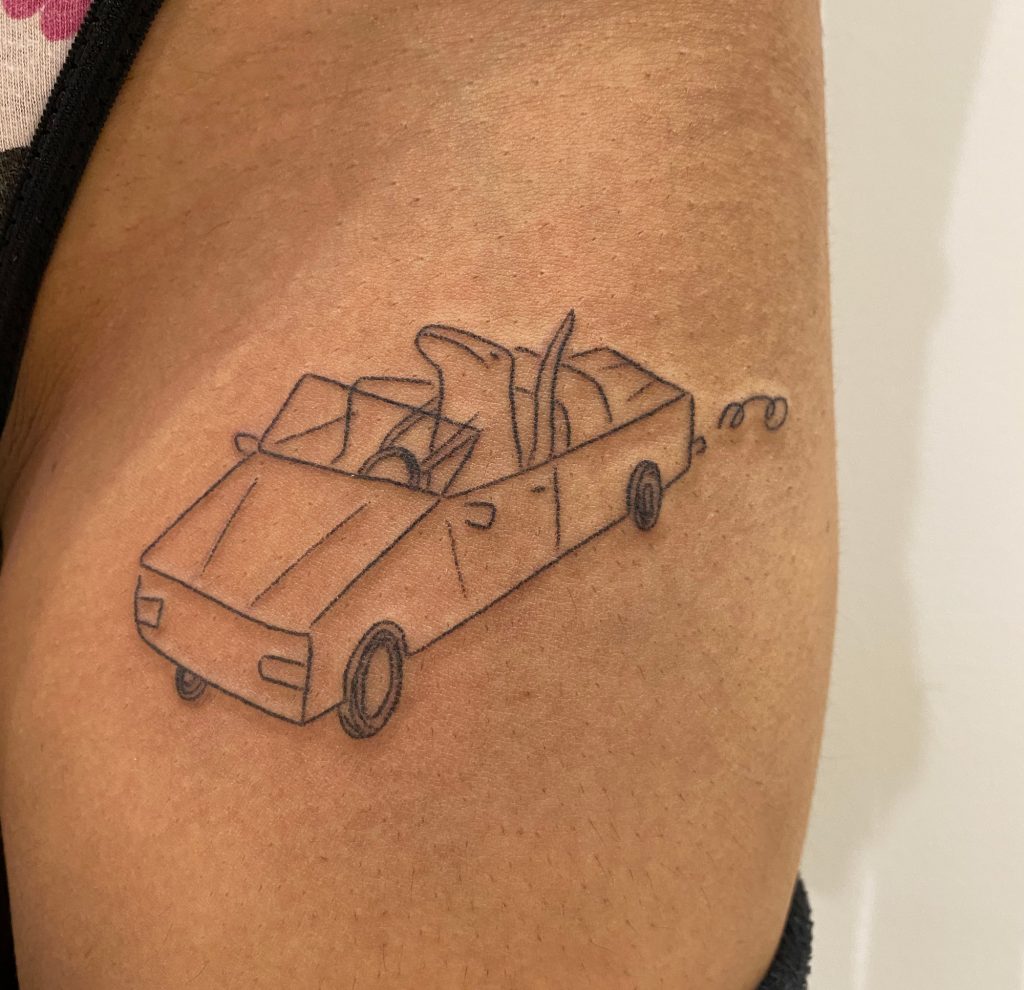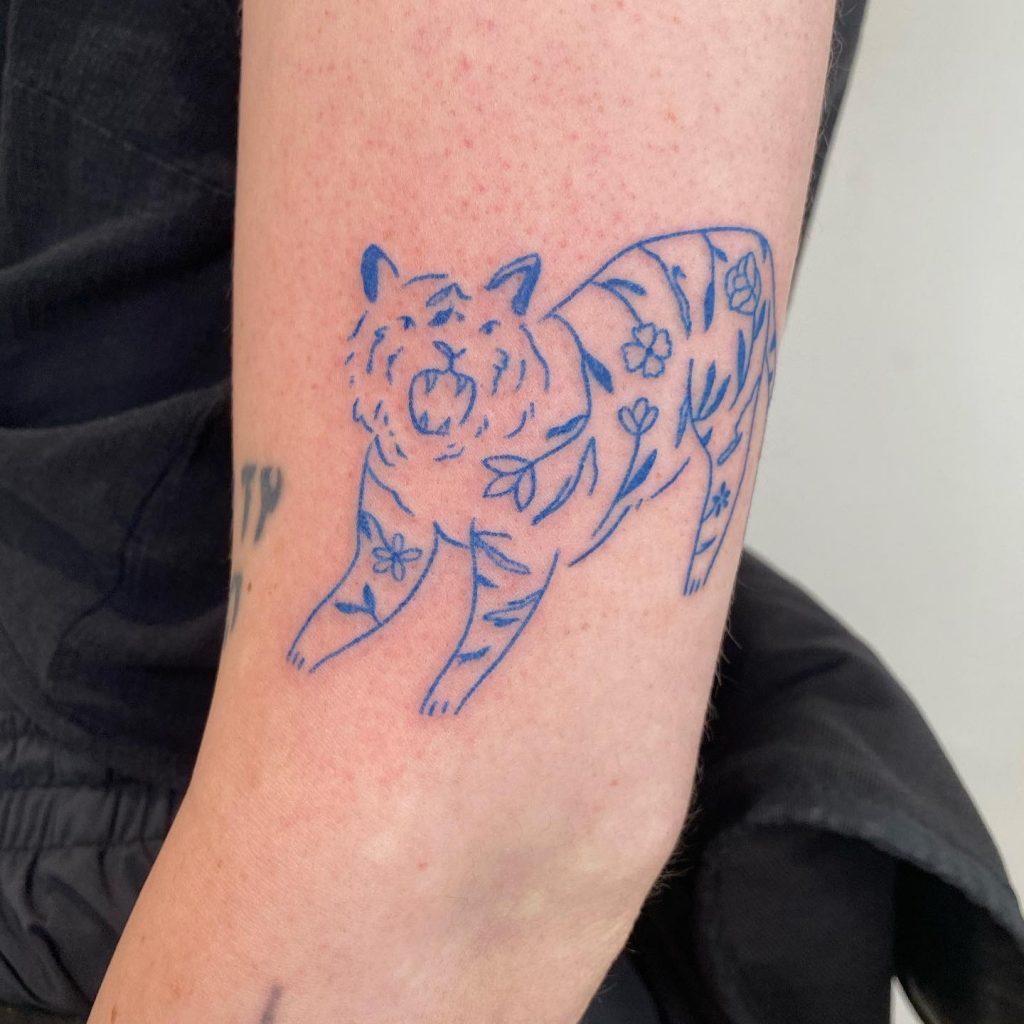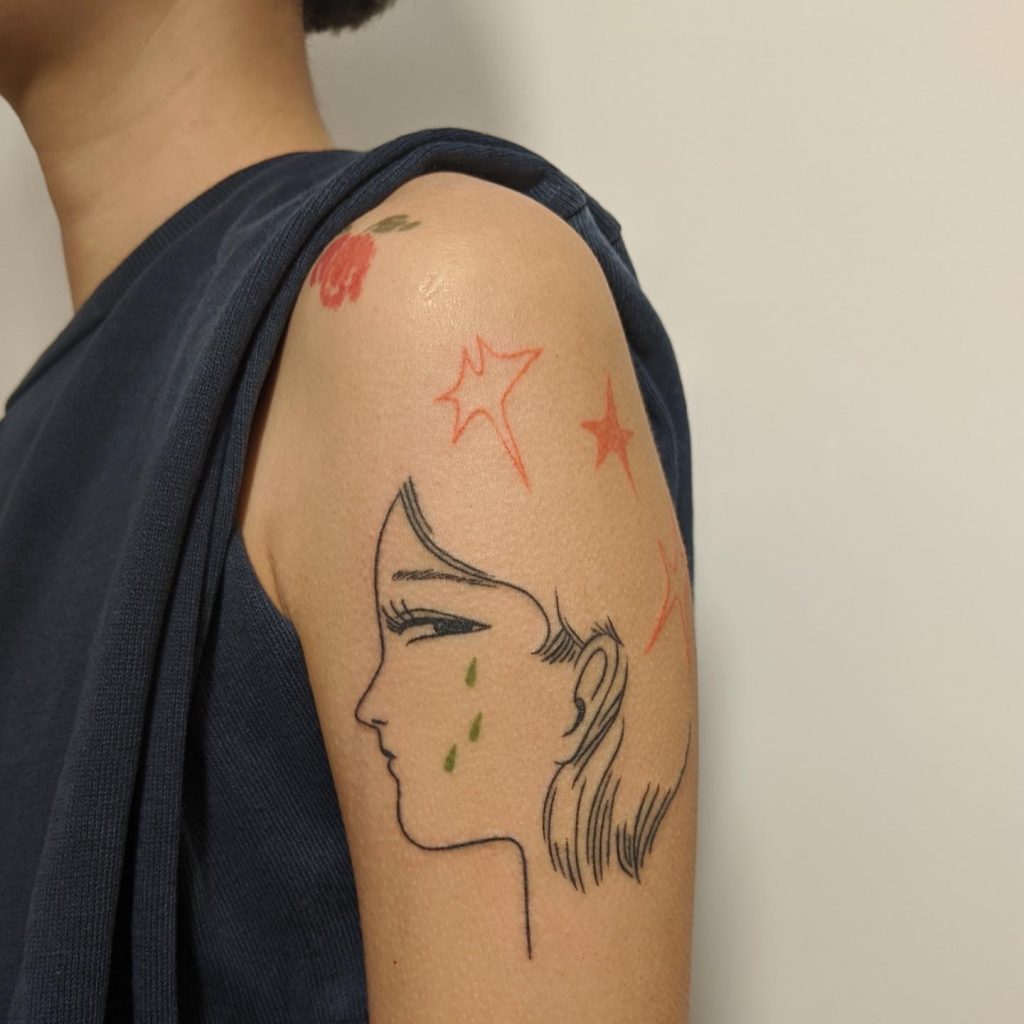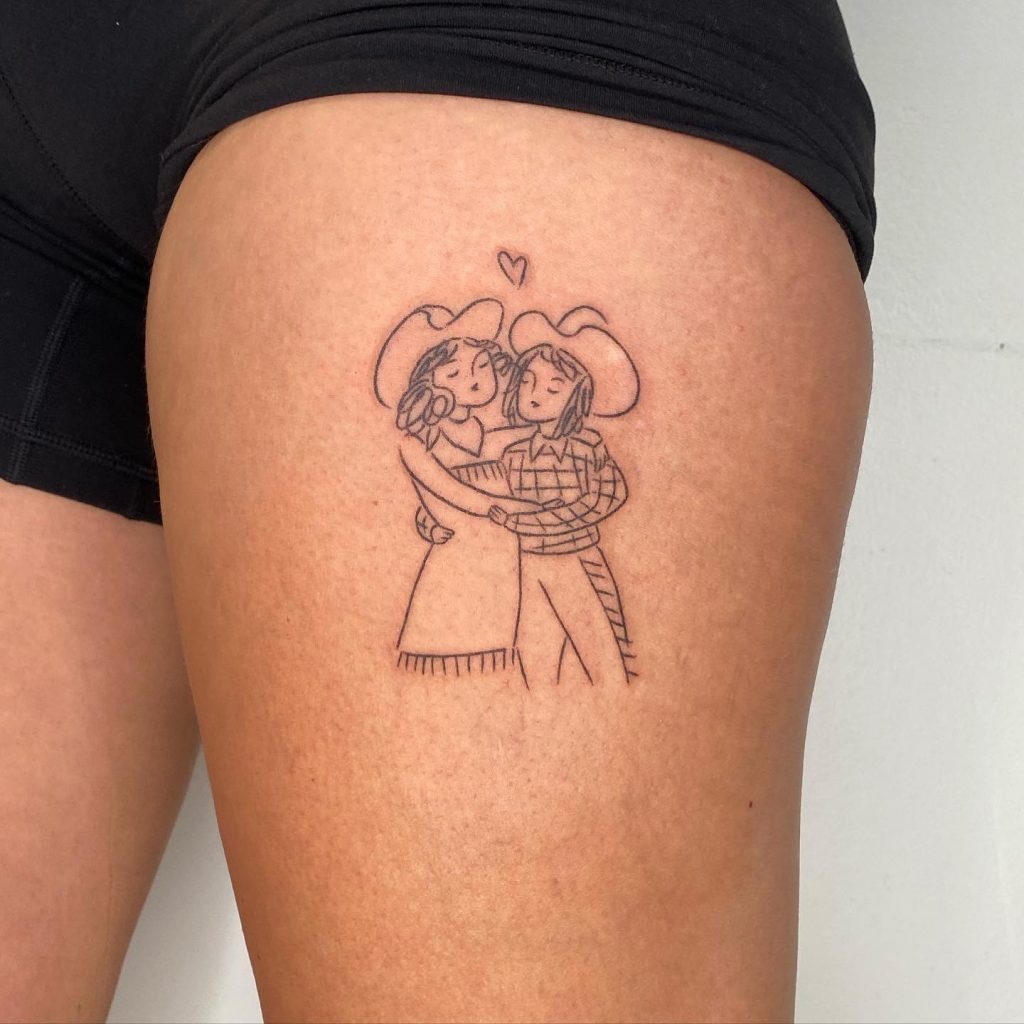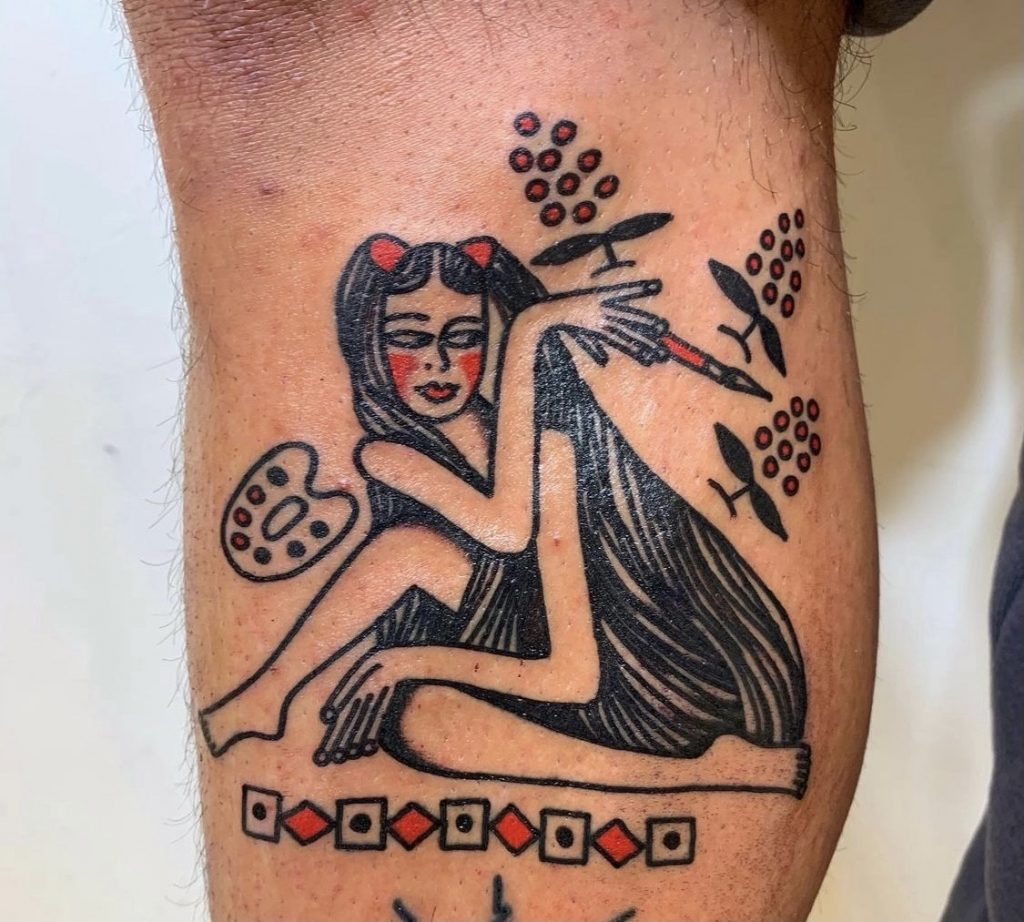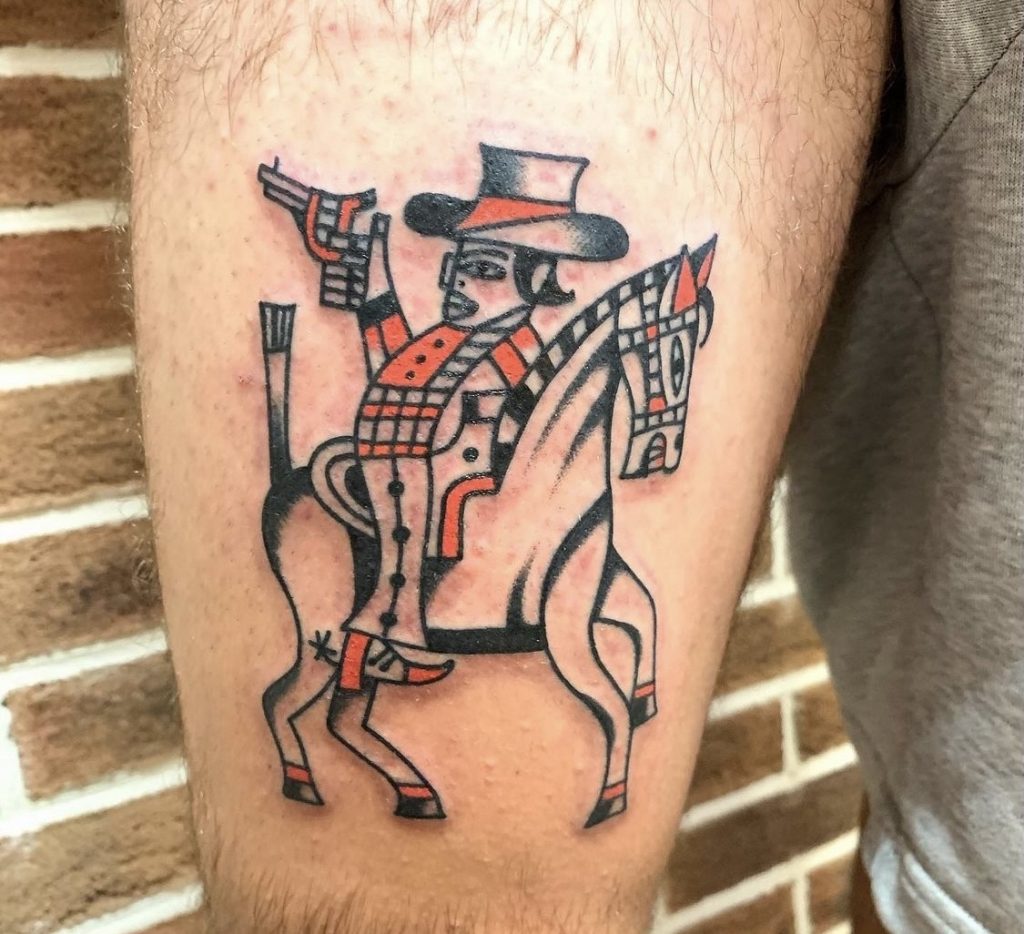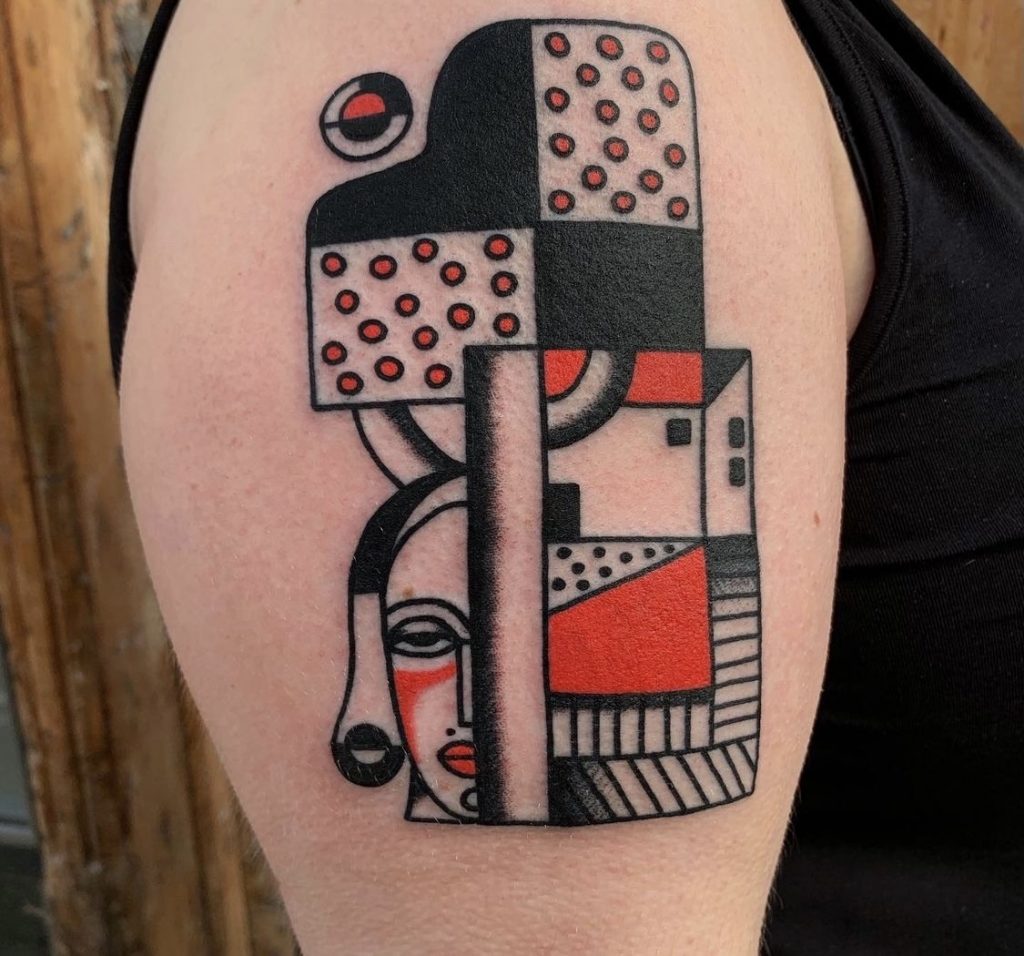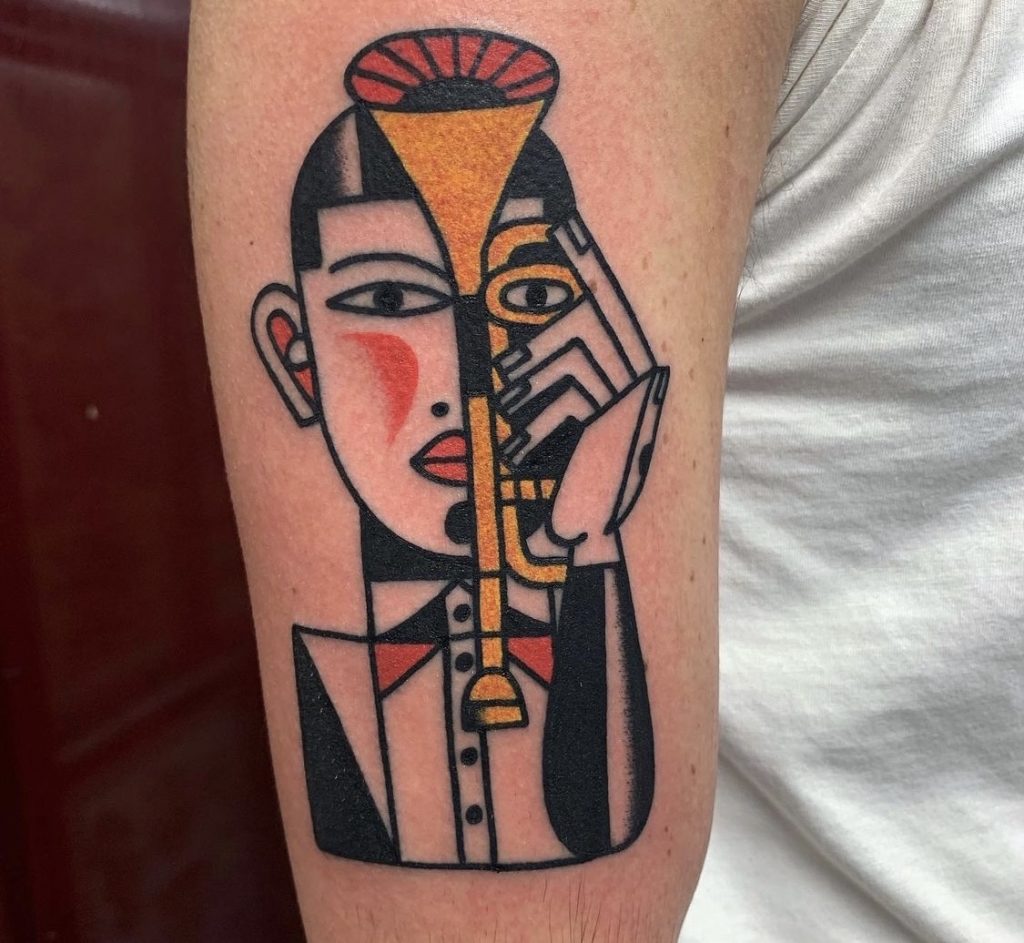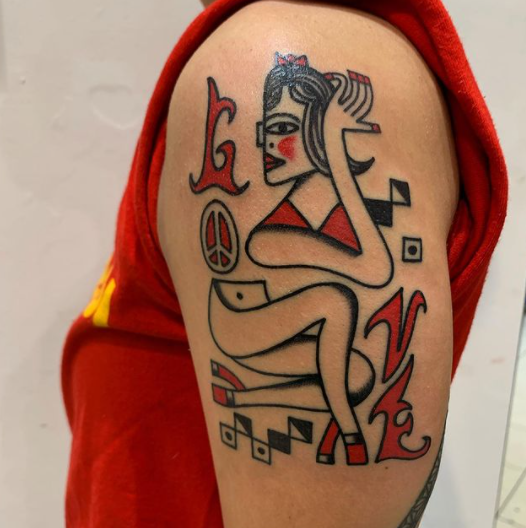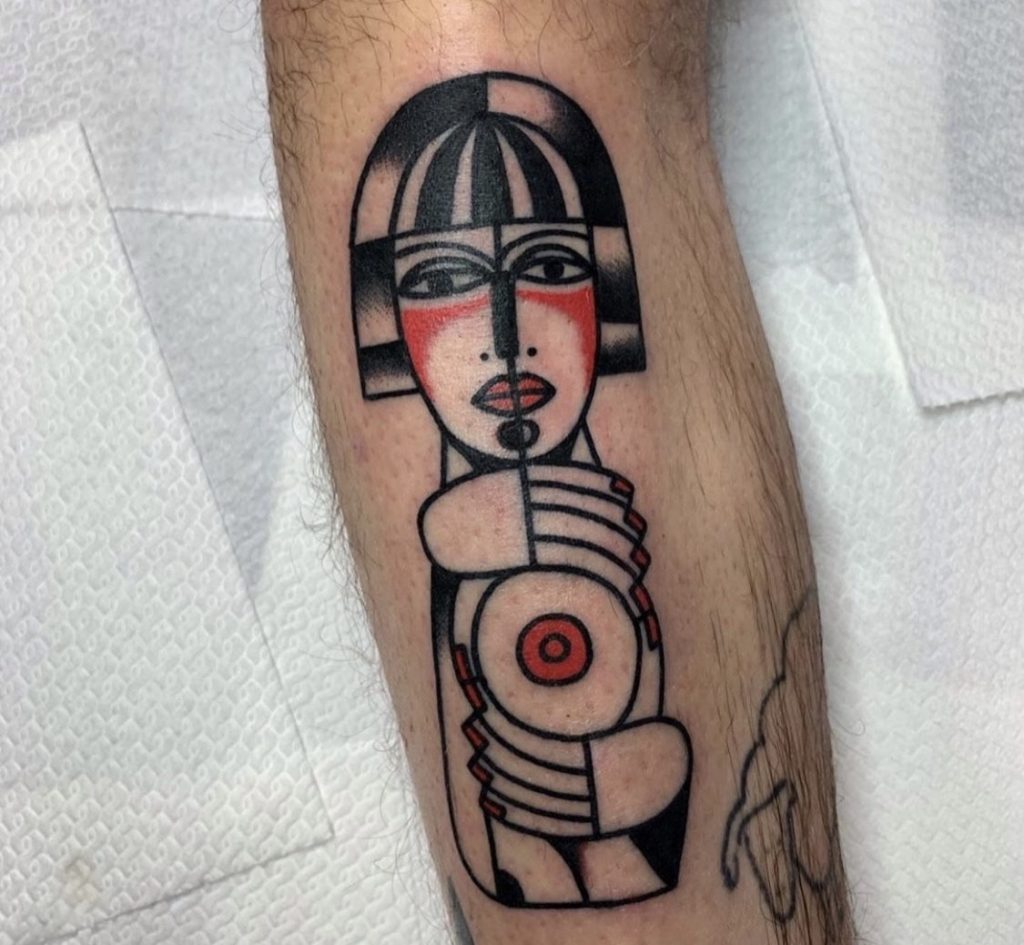Our founding editor Alice Snape spent the most gorgeous Friday afternoon inside the walls of The Gilded Rook Tattoo Studio, in Chesterfield. The studio owned by Liv Frost is up some winding stairs and it feels like an escape, there’s some seriously good vibes going on. Alice got tattooed by resident hand-poke tattoo artist Charlotte Bolton, who was gentle, patient, funny and warm; she tattooed meticulously in tiny movements while they chatted about lockdown / love / dogs (obvs). Our editor Rosalie Hurr caught up with Charlotte to find out more.
How long have you been tattooing? The Gilded Rook is the first professional studio I have worked in, and I started there in October 2020! Before then, I had been practising and teaching myself for about a year.
What inspired you to become a tattoo artist? I am a very creative person, and it has always been one of my career goals and dreams to be a tattoo artist. I just see it as another exciting art form to work in.
I’ve always had a massive interest in tattoos anyway, and knew I wanted to be covered in them myself! I also think it’s so special that people are willing to have your own unique artwork tattooed on them permanently.
I actually had a very short lived apprenticeship when I was 18. When I gave that up I always felt like I’d missed my chance at tattooing, so I’m super grateful that Liv (owner of The Gilded Rook) gave me the opportunity to come work in her studio.
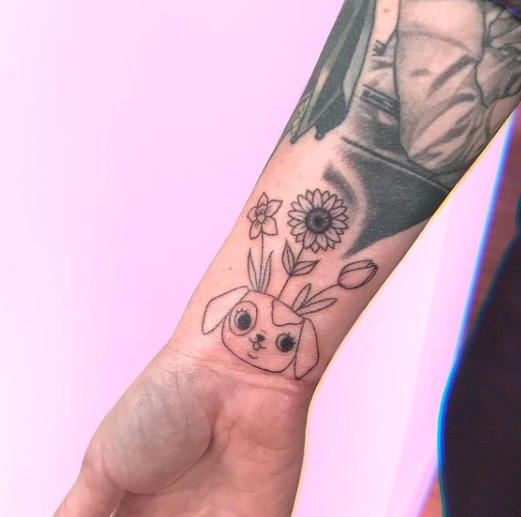
What drew you to handpoking? Have you ever used a machine to tattoo? I actually tried out handpoking because I thought that it would be something I could teach myself and that would also be a lot safer and hygienic to do at home. I never actually realised that handpoke tattoos were done in professional studios before. When I realised that, it gave me the motivation to be really serious about learning it and being hygienic in the set up and process.
I also love how therapeutic it is. In my own creative practice, I’ve always enjoyed making things that are quite time-consuming and finicky, and I feel like there’s more control with handpoke, so it seems like the perfect technique for me. I did a few machine tattoos back when I was 18, but I would love to have a proper go at learning again some time.
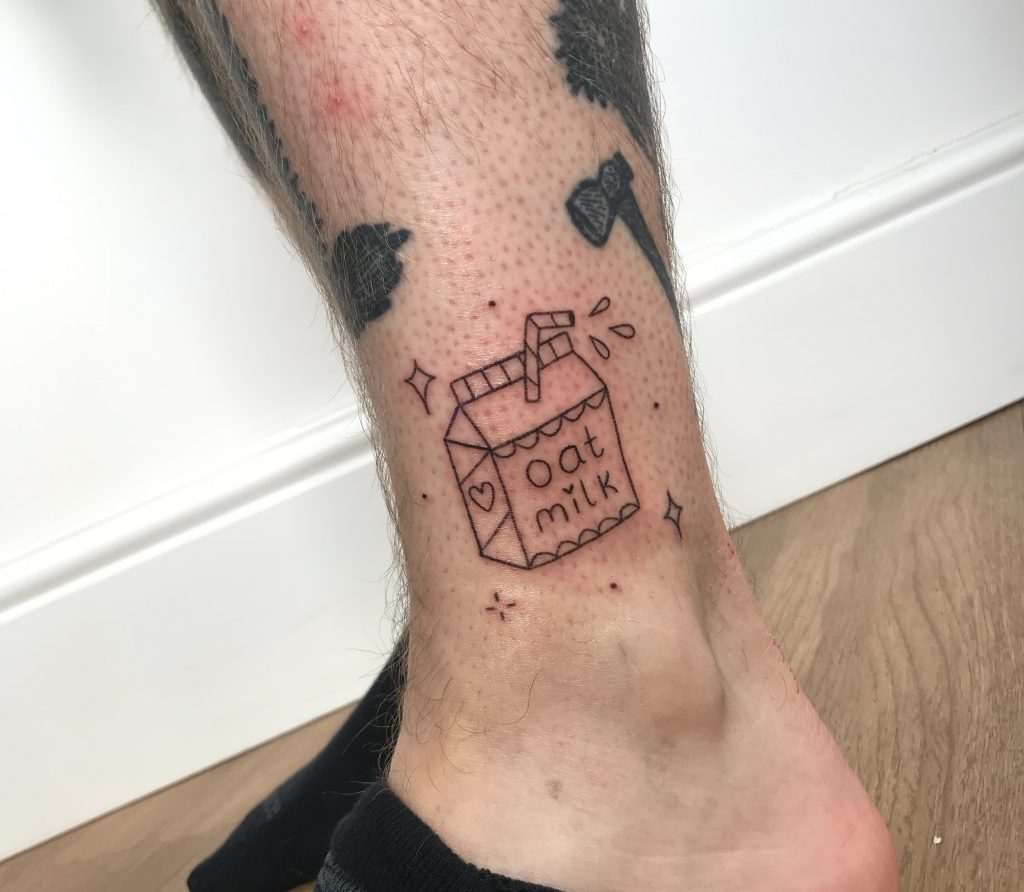
Can you tell us about your process and set-up. I am a very eco-conscious person, and obviously in tattooing there are a lot of single-use products that are mainly plastic based. So for my set-up, I try to be as eco-friendly as possible and I use plant-based covers and ink caps from Greenhouse Tattoo Supplies and sometimes tin foil for my trolley. For my needles, I simply tape them to wooden lollipop sticks with some cute washi tape!
I use exactly the same needles that are used in machine tattooing, but obviously it is all done by hand. Because of this, handpokes definitely take a lot longer than machine tattoos, but I personally think they hurt a lot less as they’re more gentle on the skin, which most of the time means the healing process is a lot quicker and nicer to deal with too!
What inspires your designs, how would you describe your style? I would say my style is cute, fun and playful! I love to draw animals and characters – sometimes I just can’t believe people want my silly drawings on them, I love it!
I get a lot of inspiration from things I just have lying around the flat, I’m such a hoarder for quirky little souvenirs from charity shops that I have an endless supply of objects to draw inspiration from! I also get a lot of fun custom ideas from people too, I recently did three little ducklings that were wearing a bucket hat, a sombrero and a leprechaun hat!? I have the best clients!
What do you love to tattoo and what would you like to do more of?At the moment I’m actually such a fan of tattooing writing, which I never expected! I would definitely love to do more writing, but anything animal or character related is always a fave for me.
What would you like people to know about handpoke tattoos? Because handpokes are a bit of a niche and people don’t know much about them, everyone is scared of them! So I’d just like people to know that it is honestly a lot less terrifying than you imagine, I think it’s actually quite relaxing and a lot easier to deal with the pain (if any!). People also assume that handpokes aren’t permanent like machine tattoos, and although they may need a touch up in the future – they are definitely permanent.
Give Charlotte a follow on Insta.
